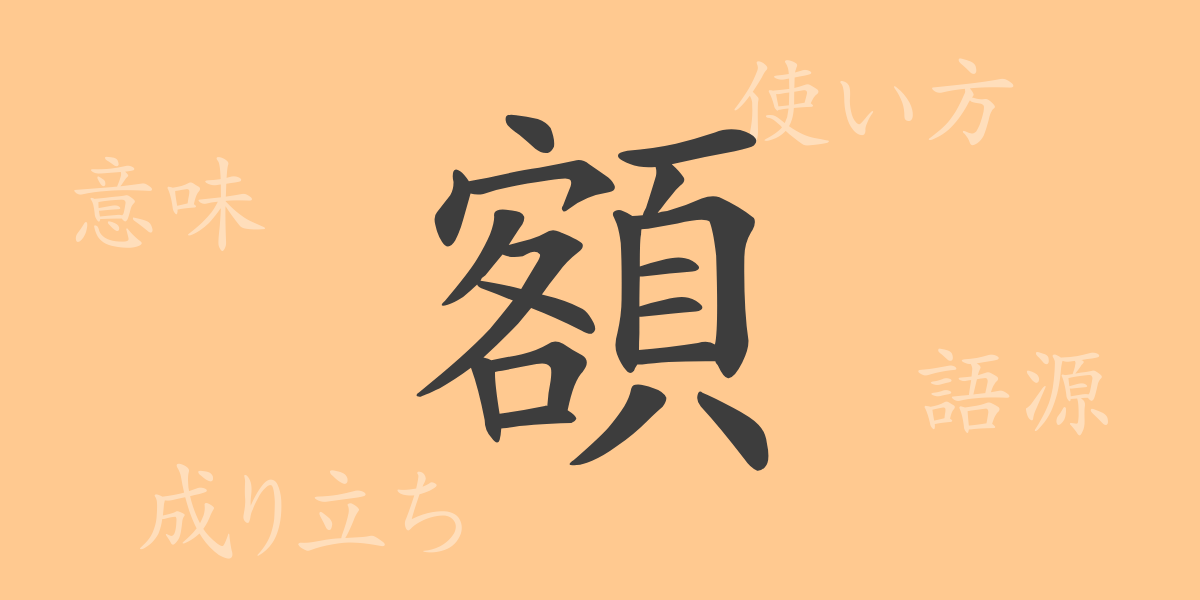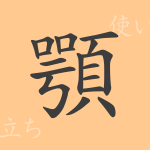Language is a mirror of culture. The meaning imbued in a single character reflects the history and culture of its nation. The Japanese Kanji “額” (Gaku), with its form and history, represents the lifestyle and values of the Japanese people. This article delves into the charm of the Kanji “額” (Gaku), from its origins to its usage, and phrases and idioms that include it.
The Origin (Etymology) of “額” (Gaku)
The Kanji “額” (Gaku) originates from ancient China. “額” (Gaku) consists of the part “頁” (Ketu) which means head, and the part “客” (Kaku), which is related to “各” (Kaku) and originally meant “everywhere” or “all places.” It came to refer to the “forehead,” the part of the head that reaches everywhere. Over time, this character made its way to Japan and came to be used in various meanings.
The Meaning and Usage of “額” (Gaku)
The Kanji “額” (Gaku) is primarily used in three meanings. The first one refers to a part of the human face, the “forehead,” the area between the eyebrows. The second meaning is “amount” as in “金額” (Kinngaku), which denotes a numerical value. The third is the “額” (Gaku) in “額縁” (Gakubuti), which means a “frame,” as for paintings or photographs. These usages vary depending on the context.
How to Read “額” (Gaku), Stroke Count, and Radical
The Kanji “額” (Gaku) demonstrates the complexity of the Japanese language in its reading and structure.
- Reading: On’yomi as “がく” (Gaku), Kun’yomi as “ぬか”(Nuka)
- Stroke Count: A total of 18 strokes
- Radical: 顔部 (Kaobu) “face radical”
Idioms, Phrases, and Proverbs Using “額” (Gaku) and Their Meanings
Idioms and phrases that include the Kanji “額” (Gaku) enrich the Japanese language with vivid expressions. For example, the idiom “額に汗して” (Nuka-ni-ase-site) depicts hard work. The term “金額” (Kinngaku) indicates a monetary amount, and “額縁” (Gakubuti) refers to a frame for displaying art or photographs. These expressions are frequently used in everyday conversation and business settings.
Summary About “額” (Gaku)
The Kanji “額” (Gaku) symbolizes the diversity and depth of the Japanese language in its wide range of uses and meanings. Literally, from the sweat on people’s foreheads as they labor to the frames that adorn artistic works, “額” (Gaku) is a word used in a broad array of scenes. Through this single character, one can glimpse the diligence and aesthetic sense of the Japanese people. Understanding the meanings behind each Kanji allows us to appreciate the profound depths of the Japanese language even more.

























